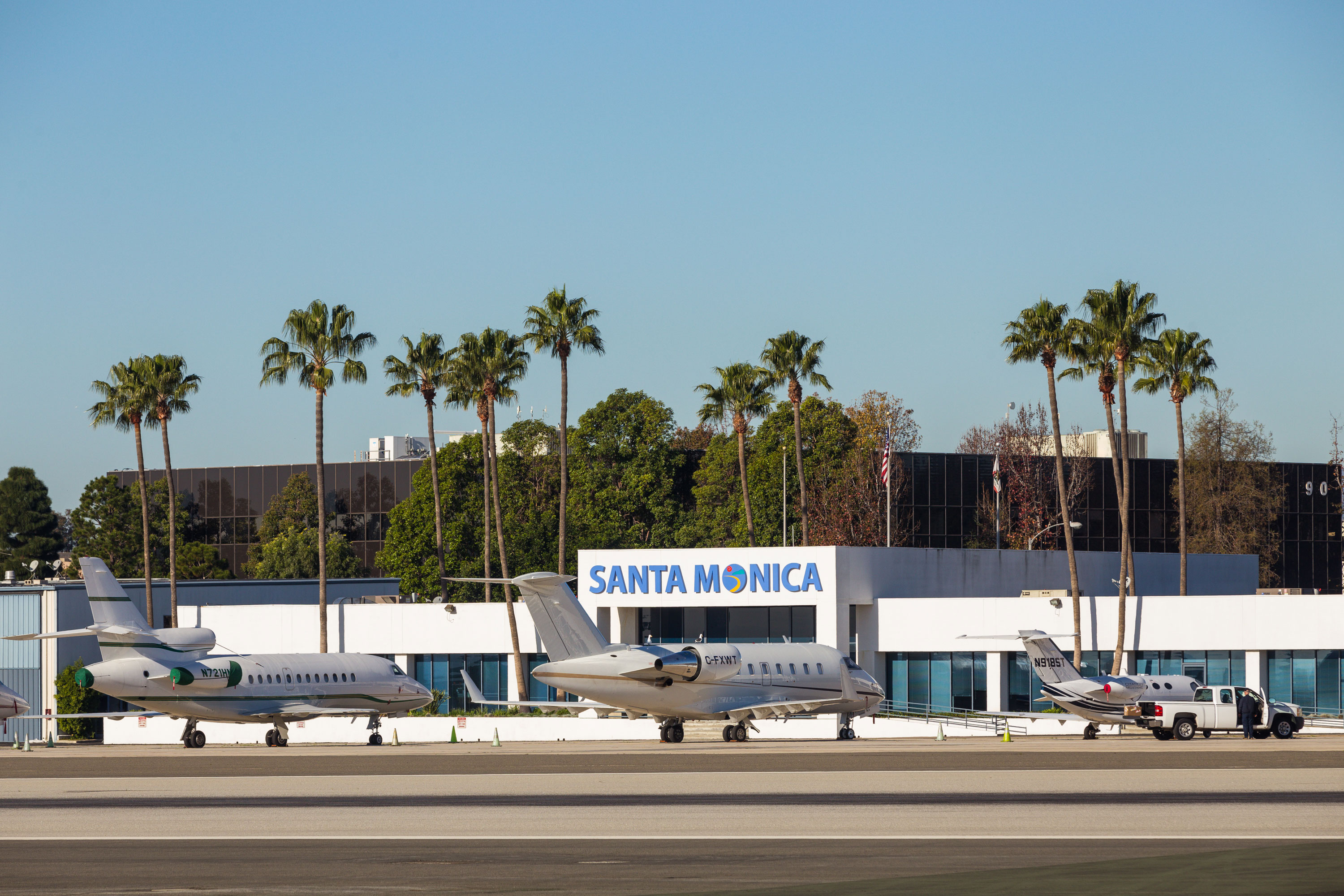
May 9, 2019
Existing in a dynamic environment of change, aviation adapts through operational selection and evolution. Business aviation operations at Santa Monica Municipal Airport (SMO) are a prime example of this flexibility, said Christian Fry, president of the Santa Monica Airport Association (SMAA).
Truncating its runway to 3,500 feet and its long-standing, strict noise abatement procedures did not diminish the iconic airport’s importance as a go-to node in the national air transportation network.
“Travelers want to be on the west side of LA,” said Fry, because it gives them the best proximity to their business destinations. “Van Nuys may only be 15 miles away, but on most mornings, that is a 60-minute drive.”
A year after the unprecedented settlement, SMO is going strong because business aviation’s flexibility and developing technology adapted to the changed environment. Atlantic Aviation, its FBO, now serves a mix of single and twin turboprops and a variety of business jets that efficiently, quietly, economically and safely operate within the airport’s requirements.
“Business aviation has remained resilient despite the runway shortening,” said Gregory Wain, general manager, Atlantic Aviation. “We have had representation from all the major jet OEMs on our ramp. We frequently see the Embraer Phenom 100/300s, Gulfstream G280s and the Falcon 50s. A number of aircraft such as the Bombardier Challenger 350, Embraer Legacy 500, Falcon 2000 and the Citations as large as the Sovereign and the Longitude have used SMO as well.”
SMAA is working on several fronts to continue the airport’s transportation contributions beyond 2028, when the agreement between FAA and Santa Monica enables the city to determine its future.
Santa Monica didn’t see many long-haul business flights even before its operating environment changed, said Fry. At gross weight, most of the jets with stand-up cabins couldn’t meet the long-standing noise abatement requirements. “Most of the flights five years ago were shorter hops,” said Fry.
Then, in April, a Dassault Falcon 8X set a new city-pair speed record with a nonstop flight from Santa Monica to New Jersey’s Teterboro Airport (TEB). It took only four hours, 28 minutes, with a meager tailwind that averaged just 5 knots. (The National Aeronautic Association is now ratifying the record.)
With four passengers and a 200-pound payload, the large cabin jet beat the previous record by 24 minutes, set when SMO’s runway measured 5,000 feet. This proving flight is another facet of business aviation’s operational evolution. When it landed at SMO before starting its record run, the jet needed less than 2,000 feet. With a balanced field length of 3,200 feet when it took off for Teterboro, its noise impact measured significantly below SMO’s 95-dBA SEL limit.
“What makes this record incredibly cool is that aviation technology can adapt with benefits, not sacrifices,” said Fry. It proves the ability of aviation to adjust to operational needs keeping business aviation viable not only at Santa Monica, but at airports nationwide.


 International Business Aviation Council Ltd.
International Business Aviation Council Ltd.